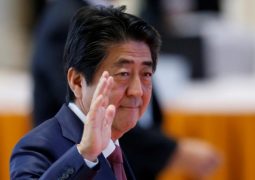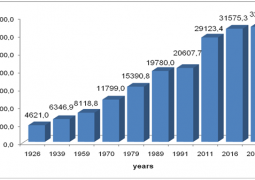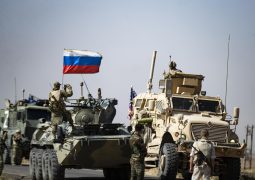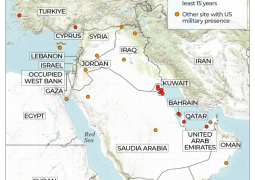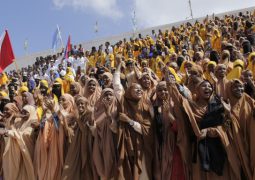Doubling down America’s misadventure in Yemen
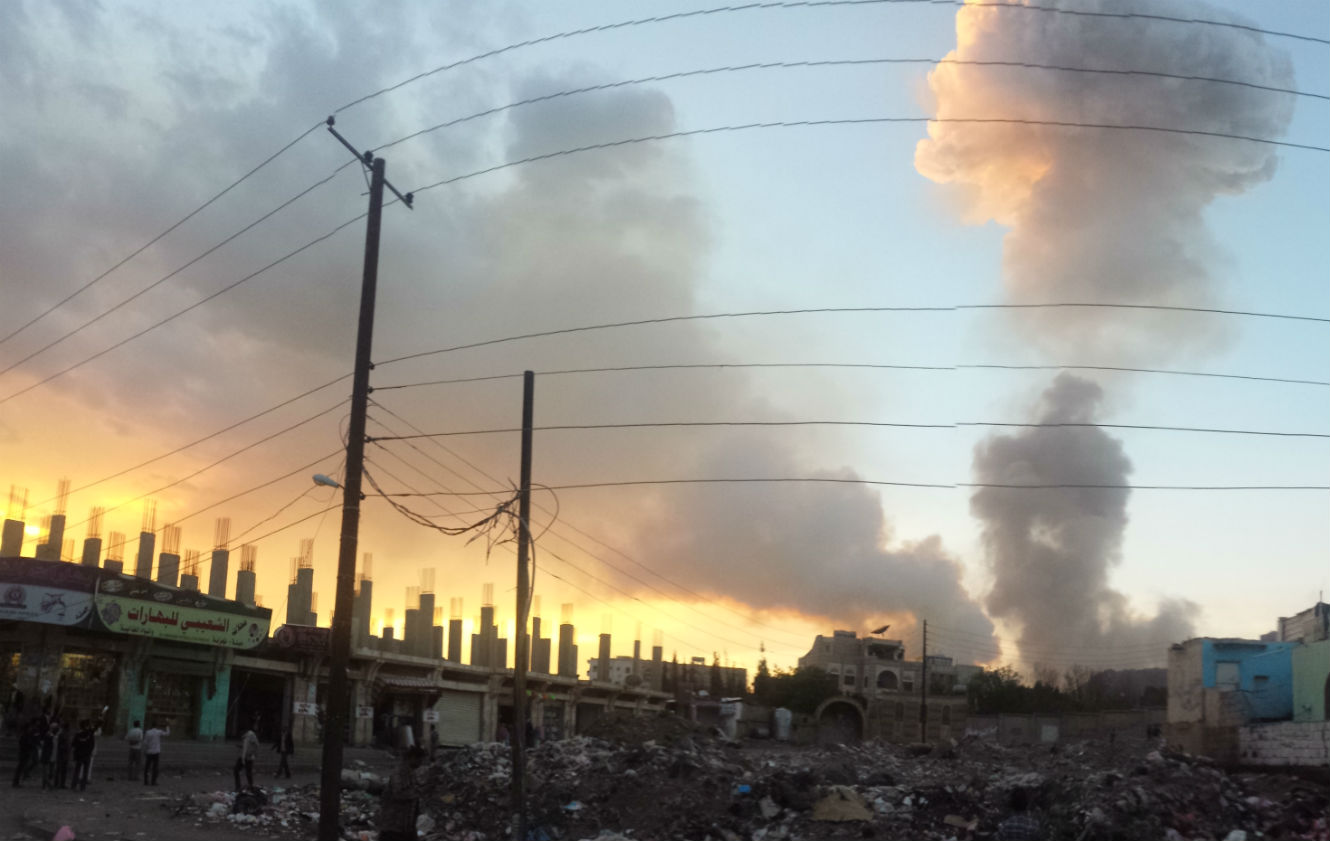
While all eyes are focused on Syria, the United States is busy making extremely bad situation in Yemen even worse. In the wake of the recent Washington visit of Saudi Deputy Crown Prince Mohammed bin Salman, the Trump administration has significantly increased its support for the Saudi-led military campaign against the Houthi rebels in Yemen. But lacking clear objectives, a plausible theory of victory, or an exit strategy, neither the United States nor Saudi Arabia is playing a winning hand in Yemen. While there may be opportunities in Yemen and elsewhere in the region for U.S. cooperation with the Sunni Arabs in containing Iran, siding with Saudi Arabia and its partners in Yemen’s civil war has implicated America in a strategically ill-conceived and morally reprehensible military campaign and risks dragging the United States into a quagmire.
The Trump administration has articulated three primary priorities in the Middle East — aggressive action against Sunni terrorist groups, increased efforts to counteract Iranian influence, and improved relations with traditional regional allies and partners. At first glance, an escalation of U.S. military involvement in Yemen checks all three boxes: al-Qaeda in the Arabian Peninsula (AQAP) is al-Qaeda’s most dangerous franchise. Iranian influence in Yemen is expanding. U.S.-Saudi relations are emerging from the rough patch of the latter years of the Obama administration. For a new president eager to project a stronger image of the United States, doubling down on the Saudi-led effort to crush the Iranian-backed Houthi rebels seems like a good bet. And what could be more enticing to Trump than succeeding in Yemen where the Obama administration failed?
Dancing to the Saudi Tune
In March 2015, the Obama administration reluctantly agreed to provide limited, but critical, support to the Saudi-led military intervention in the form of intelligence sharing, air-to-air refueling, logistics support, and weapons sales. Expecting perhaps that the campaign would be limited in duration, intensity, and scope, the administration hoped to secure the kingdom’s tacit acquiescence to the pending Iranian nuclear agreement and reassure the royal family of the U.S. commitment to Saudi security. The Saudis played to this anxiety with exaggerated claims that the Obama administration had abandoned Saudi Arabia for the sake of currying favor with Iran. Riyadh also played the credibility card, arguing that America was no longer a reliable security partner because of its failure to enforce the chemical weapons red line in Syria and to topple the Assad regime after Obama said that the Syrian dictator must go. Trump’s April 6 decision to use military force against the Syrian air force should put an end, at least temporarily, to Saudi complaints about Washington’s supposed credibility gap.
Saudi Arabia’s concerns weren’t completely unfounded. The Houthi takeover of the capital of Sana’a in September 2014, coupled with (implausible) fears of a possible strategic U.S.-Iranian realignment, created a sense of panic in Riyadh that the kingdom might face in Yemen what Israel endures in Lebanon — a well-armed, deeply entrenched, Iranian-supported militia on its back doorstep. But by agreeing to cover the Saudi bet that it could bomb the Houthis into submission, the Obama administration emboldened the kingdom and their coalition partners to take greater risks in Yemen in a textbook example of “moral hazard.”
While America’s overriding strategic priority in Yemen is to defeat and destroy AQAP, the top Saudi priorities were, in the private words of one senior Saudi prince, “Iran, Iran, and Iran.” Saudi diplomacy deserves credit for persuading successive U.S. administrations that safeguarding America’s security interests in Yemen could be safely outsourced to Saudi Arabia and other Sunni Arab states. U.S. interests would have been better protected had Washington heeded the advice of Hans Morgenthau to “never allow a weak ally to make decisions for you.”
Meanwhile, signs of disagreement have intermittently appeared between Saudi Arabia and its key coalition partner, the United Arab Emirates. The announcement last June, by Abu Dhabi’s crown prince, Sheikh Mohammed bin Zayed Al Nahyan, that the Emiratis were ending ground combat operations in Yemen against Houthi rebels was premature. Their forces continue to be involved in the campaign against the Houthis. But the country is prioritizing expanded counterterrorism efforts against AQAP, while deepening cooperation with the United States military. U.A.E. troops took the lead in liberating the port city of Mukalla last spring from AQAP, and Emirati special forces have conducted joint operations in Yemen with U.S. Navy SEALs.
Do No More Harm
The U.S. government has little understanding of Yemen’s complex tribal society and even less ability to affect internal Yemeni politics. However, Washington does have a keen interest in avoiding three disastrous outcomes. The first is state collapse, which would worsen Yemen’s humanitarian catastrophe. The second is the emergence of a Yemeni Hezbollah in the Arabian Peninsula. And the third, which is the most important from the standpoint of U.S. security, is the creation of an AQAP safe haven from which further attacks against the U.S. homeland could be organized. All three outcomes — and, paradoxically, an expansion of Iranian influence in Yemen — appear closer today than two years ago, when Saudi Arabia and their coalition partners embarked on their benighted military adventure with no clear political strategy for how to end it.
The United Nations estimates more than 10,000 civilians have been killed and 3 million displaced from their homes since the Saudi intervention began. But this could be just the tip of the iceberg. According to UNICEF, 2 million Yemini children suffer from acute malnutrition, and 60,000 children died last year of preventable causes associated with malnutrition. On March 22, Greg Gottlieb, the acting assistant administrator for the U.S. Agency for International Development (USAID), testified before the Senate Foreign Relations Committee that with 17 million Yemenis (60 percent of the population) suffering from food insecurity and 7 million unable to survive without food assistance, Yemen is “the largest food security emergency in the world.”
The conflict and humanitarian crisis appear to be converging as Saudi-allied forces mass around the Houthi-controlled city of Hodeidah. An estimated 70 percent of Yemen’s food supplies enters the port city, but the surrounding region, one of Yemen’s poorest, is already at severe risk for famine, and relief organizations worry that widespread fighting there could have catastrophic humanitarian implications. The Trump administration has yet to decide whether it plans to support this coalition attack.
If the Saudis and their partners had hoped their intervention would project strength, in fact, the opposite has happened. Iran has exploited, on the cheap, the Saudi-led campaign, and thus made the expansion of Iranian influence in Yemen a Saudi self-fulfilling prophecy. The costs of the Saudi air campaign, which makes heavy use of expensive air-to-ground munitions, have been estimated at $200 million a day. By contrast, Iranian support for the Houthis is more cost effective, consisting mostly of training, advisors, and ground munitions. While this support has certainly increased over time, the vast majority of the Houthi arsenal — notwithstanding occasional reports of Houthi use of Iranian-supplied cruise missiles and drones — was seized from Yemeni army stockpiles, including its large Soviet-era SCUD inventories.
Descriptions of the Houthis as Iranian proxies are overstated. But the longer the conflict continues the more likely the Houthis will evolve into the type of IRGC-supported militias operating in Syria and Iraq. Indeed, with Riyadh’s attention increasingly focused on Yemen, Iran’s hand in the Levant has actually been freed, as evidenced by the Saudi withdrawal of financial support from Lebanon and its apparently reduced involvement in Syria.
AQAP has taken advantage of state collapse, growing sectarianism, and civil war, all exacerbated by the Saudi intervention, to dramatically expand both its size and political influence. Notwithstanding U.A.E. efforts to expel AQAP from Mukalla, the Saudi-led coalition has more generally not successfully contested the group’s growth. According to a recent report by the International Crisis Group, AQAP has become stronger than ever, having grown from several hundred fighters in 2009 to roughly 4,000 today. Indeed, Saudi Arabia’s understandable reluctance to embark on a full-scale land invasion of Yemen has worked to AQAP’s favor, since Saudi Arabia is dependent on a constantly evolving patchwork of local tribal militias and loyalist forces which AQAP fighters have penetrated. In Taiz, for example, Yemen’s third largest city and cultural capital, there are reports that AQAP members form an important component of the Saudi-backed anti-Houthi coalition.
In short, over the past two years both Iran and AQAP have greatly benefited from the ongoing civil war in Yemen. Increased U.S. support will allow the Saudi military to escalate its air campaign, but air power alone is unlikely to be decisive, and the results will likely further entrench Iran and AQAP, while doing little to make Saudi Arabia more secure. Moreover, supporting the brutal Saudi air campaign — which U.N. advisors have warned “may amount to war crimes” — risks making America complicit in a humanitarian calamity.
Give Peace a Chance
History has shown that the longer localized Middle East conflicts fester the more likely they are to metastasize into geopolitical contests which empower and embolden the most radical actors. Hezbollah didn’t exist in Lebanon before the 1982 Israeli invasion and al-Qaeda was barely present in Iraq before 2003. But today, Hezbollah is the dominant military force in Lebanon and al-Qaeda in Iraq has given way to an even more brutal progeny, ISIL.
A key to halting the further growth of sectarianism and radicalism in Yemen and the chaos which feeds extremism is to de-escalate the fighting and to negotiate a comprehensive peace based on a formula for power sharing that is acceptable to the country’s warring factions and tribes.
Unfortunately, multiple iterations of U.N.-led peace negotiations have faltered in large part because Riyadh has been unwilling to accept a compromise that would give the Houthis a larger political stake. Progress toward a political settlement would not solve Yemen’s myriad security problems, but it would facilitate the distribution of desperately needed humanitarian assistance. A full rupture in relations between Iran and the Houthis is unrealistic, but in the context of a political negotiation, it might be possible to find creative ways to reinforce U.N. Security Council resolution 2216, which prohibits arms shipments to the Houthis. More importantly, a settlement could create momentum toward increasing the political and military pressure against AQAP and isolating the hard-core international jihadists from the local tribal networks whose hospitality they need to operate.
Washington’s core strategic objective in Yemen, therefore, should be to leverage U.S. assistance to Saudi Arabia and their coalition partners in the war against the Houthis to achieve an immediate de-escalation of the fighting. Rather than double down on a bad bet, the Trump administration should put the Saudis on notice that if they do not get fully behind the U.N.-sponsored effort to mediate a negotiated end to the conflict, the United States will contemplate cutting off the military, intelligence, and logistics support it is providing to Saudi and coalition forces for their campaign against the Houthis. As a result of its military response to Syria’s chemical weapons attacks, the administration is now in a stronger position to urge the Saudis to exercise greater restraint in their military operations against the Houthis.
When You’re in a Ditch and Want to Get Out
U.S. policy toward Yemen has failed catastrophically. Allured by the prospect of scoring a huge win against Iran and global jihadists and showing there was a new sheriff in town, the Trump administration, which had an opportunity to perform a mid-course correction, forgot the first law of holes and, as a result, is driving U.S. policy into a deeper ditch. By catering to the Saudis in Yemen, the United States has empowered AQAP, strengthened Iranian influence in Yemen, undermined Saudi security, brought Yemen closer to the brink of collapse, and visited more death, destruction, and displacement on the Yemeni population. Ratcheting up U.S. military support for the quixotic, inhumane, and dangerous pursuit of Saudi Arabia’s anti-Iranian agenda in Yemen, in the words of Talleyrand, “would be worse than a crime, it would be a mistake.”
Perry Cammack is a fellow at the Carnegie Endowment for International Peace and Richard Sokolsky is non-resident senior fellow at Carnegie. They were members of the Secretary of State’s Office of Policy Planning from 2013 to 2015 and 2005 to 2015, respectively.
- Previous Korea at top of Asean summit agenda
- Next Malaysia central bank to support agencies probing flow of funds to North Korea



